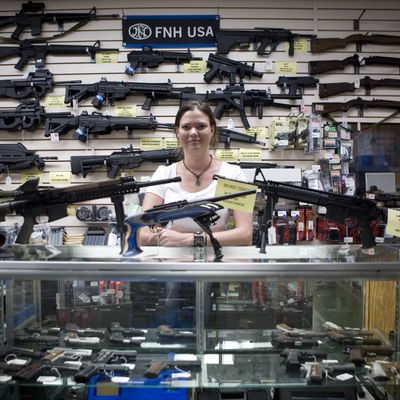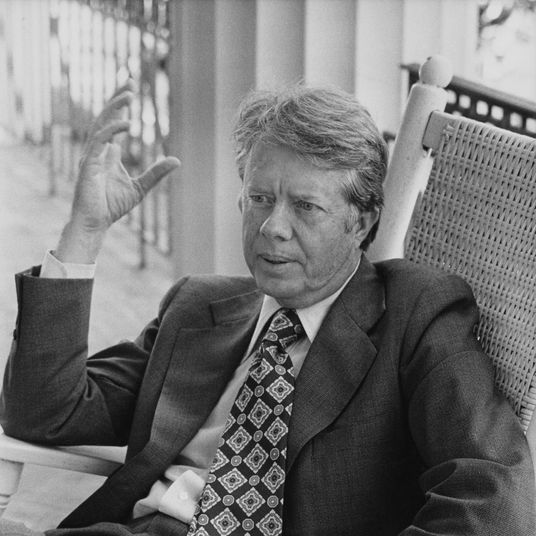
The National Rifle Association likes to call the Colt AR-15 “America’s rifle”: They and the many imitations manufactured since Colt’s patents expired in 1977 are the most popular type of rifle in the U.S., with millions in circulation.
They’re also pretty popular with Mexican drug cartels, as the Government Accountability Office noted in a 2016 report. According to data from the Bureau of Alcohol, Tobacco, Firearms and Explosives, 73,684 firearms seized in Mexico and traced from 2009 to 2014 originated in the United States, over half of which were long guns.
These represented 70 percent of the more than 100,000 firearms seized in Mexico and submitted to U.S. authorities for tracing (not the total number of guns seized in Mexico during those years). The original owners of many of these weapons could not be traced.
The report also highlighted that “weapons parts are being transported to Mexico to be later assembled into finished firearms, an activity that is much harder to track.” Weapons parts are not subject to the same controls as assembled guns, such as requiring a serial number. Part of what makes the AR-15 so popular is that it’s easy to build and customize, so it’s a fair assumption that many of these trafficked parts are being assembled into AR-15-style rifles.
The point here is not that the AR-15 is a uniquely evil gun (it isn’t), but that while President Donald Trump demagogues about Mexican immigrants bringing drugs and crime across the border into the U.S., tens of thousands of American guns are making that journey in the opposite direction, often illegally and often destined for the people operating and profiting from the Mexican drug trade.
Mexico’s gun laws are extremely restrictive, but the proximity of the U.S. and the lack of regulation here make them relatively easy to smuggle into the country. As arms trafficking experts Sarah Kinosian and Eugenio Weigend wrote in a Los Angeles Times op-ed last year, Mexican criminals tend to get their hands on U.S. weapons the same way American criminals do: through straw purchases, in which one person buys a gun legally and sells it or hands it off illegally.
Gun trafficking, they add, is “a high-profit, low-risk activity,” as trafficking within the U.S. is not illegal under federal law and straw purchasers rarely face harsh penalties when caught. In this manner, the U.S. is arming both sides of the drug war in Mexico, between the hundreds of millions of dollars worth of weapons, ammunition, vehicles, and other equipment our arms manufacturers ship to the Mexican military and police; and the lucrative business of illegal trafficking, from which one study calculated that half of all U.S. gun dealers earned $127 million in 2012. Without the Mexican market, many of these dealers would go out of business.
Mexico is by no means the only destination for black-market American firearms. An investigation last year by RAND Europe and the University of Manchester found that nearly 60 percent of firearms listed for sale on the dark web were of U.S. origin, though Europe was the largest market for the unregulated online trade in firearms, generating revenues about five times higher than the U.S. Nor is illicit trafficking the only way American guns get into the hands of people in other countries who probably shouldn’t have them.
In places like Syria, Iraq, and Afghanistan, they start out as military assistance given or sold to allied governments and non-state actors. They then make their way into the black market and often, the hands of our enemies. CNN recently found numerous U.S. military-issue small arms, including M16 and M4 assault rifles as well as “grenade launchers, heavy machine guns, thermal sniper scopes and body armor,” being sold via jihadist channels on the encrypted messaging app Telegram in a part of Syria controlled by Al Qaeda–affiliated militants. U.S. weaponry (both light and heavy) also still occasionally falls into the hands of ISIS, often diverted from legitimate buyers in the Middle East and Eastern Europe.
In Iraq and Afghanistan, where the U.S. has been at war since before some of the victims of the Parkland school shooting were born, the Pentagon has over the years supplied various security partners with more than 1.45 million guns, including nearly 1 million assault rifles, an investigation found in 2016 (with the author noting that it could be a vast underestimate).
Of those weapons, the Defense Department had records of only 700,000, or 48 percent, meaning, at the very least hundreds of thousands of weapons sent to these war zones by our government have gone missing. Not all of these weapons were American-made — some were cheaper, older Russian machine guns and Kalashnikov assault rifles — but many M16s, M4s, and other American guns far deadlier than the AR-15 have been dumped into some of the most violent and unstable countries on Earth.
American guns also travel abroad via the legitimate small arms trade. A 2016 study by the Small Arms Survey, an independent research project, found that small arms imports in the Middle East nearly doubled from $342 million to $630 million between 2012 and 2013. The study also observed that some of these guns were being passed on from licit importers in the region to the war zones of Syria, Iraq, Libya, and Yemen. Again, not all of these guns were American, but many of them undoubtedly were, considering that the U.S. was the top small arms exporter in 2013, making $1.1 billion in sales. (The U.S. was also the top importer, to the tune of $2.5 billion.)
Those sales might be set to increase even further, if a plan drawn up by the Trump administration last September is put into action. That plan, officials told Reuters at the time, would move oversight of foreign non-military firearms sales from the State Department to the Commerce Department, supposedly cutting red tape and potentially boosting U.S. gun makers’ annual international sales by 15–20 percent. (Manufacturers have been counting on more access to the global market to make up for their lost revenue, now that American gun enthusiasts are no longer afraid of the president taking their toys away.)
Critics of the proposal say it will raise the risk of these guns being diverted to unauthorized users and into conflict zones, while making it harder to prevent and prosecute illegal arms trafficking. Those fears sound eminently reasonable, especially considering that Saudi Arabia is one of the top destination countries for such exports.
Trump has also looked to loosen restrictions on the sale of U.S. arms to foreign governments and to have the Departments of State and Defense act as even more aggressive salespeople for American arms manufacturers. The stated rationale for these policies is to make American trade more competitive, goose the American manufacturing renaissance, and create jobs. That the gun industry and lobby are major supporters of Trump and the Republican Party could also have something to do with it, possibly.
Hold the smug liberal outrage, however, because these aren’t strictly Republican policy priorities. The plan to shift oversight of foreign gun sales to the Commerce Department originated in the Obama administration but was tabled after the Sandy Hook massacre in 2012. U.S. arms exports, meanwhile, increased 43 percent during Obama’s time in office, according to one estimate, and nearly half of those arms went to the Middle East.
Why do guns rule everything around us? It’s the economy, stupid. The firearms industry employs over 140,000 Americans directly and generates $20 billion in economic activity, according to the National Shooting Sports Foundation, while the defense industry counted some 1.7 million employees in 2015 and generated $300 billion or 1.8 percent of the total U.S. GDP. As long as Americans can make that much money and support that many jobs by building instruments of death and shipping them all over the world, there’s not much chance of us ever getting out of this odious business.





























